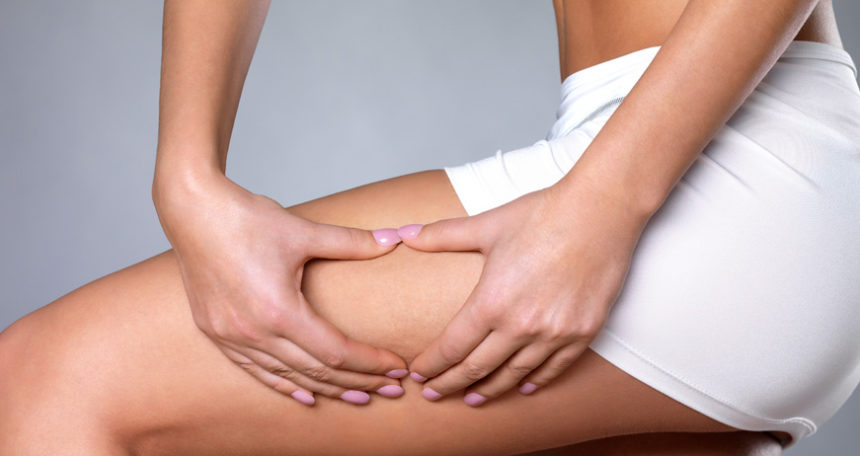Thanks to Dr. Bencini we discover what were and what are the approaches to cellulite today: modes of intervention and new treatments.
Since the late 1970s, recourse to aesthetic medicine has spread, creating an ever wider energetic space by attracting those skills that were formerly of a specific field of study of dermatology and plastic surgery. These were the only academic specialisations recognised at that time, with all aesthetic issues being snubbed as not worthy of attention because they were not considered diseases. This approach to certain problems has turned out to be erroneous over the years, expanding further the issues in question.
The debate over the years around cellulite
Cellulite has always been one of the most controversial topics, as Dr. Bencini explains. Supporters of aesthetic medicine, especially of the French and Italian schools, persevered in demonstrating the dignity of a real pathology by trying to find high-sounding definitions for a simple blemish, thus seeking to legitimise acknowledgment of the presence of a serious pathology that required treatment.
Dr. Bencini notes a very different approach in the United States where consideration of the problem of cellulite was limited to more circumscribed and serious cases where cellulite was understood as a serious adipose tissue infection; this contrasted with the view, which filled pages and pages of popular health magazines of the day, that cellulite was nothing but an anatomical peculiarity of the female, especially Caucasian and Asian, gender.
Dr. Bencini explains that since there is no associated morbidity or mortality, the Anglo-Saxons claimed that cellulite could not be considered a disease. However, this view had gradually faded over time, which had then led to the current view of cellulite no longer classified as an irrelevant problem for the health of mostly female patients.
In any case, whether illness or simple blemish, nobody likes cellulite and it represents an important problem, both because of the high number of women suffering from it (between 85 and 98% of post-puberty females) and its important implications for the quality of female life. Hence it represents a social problem that cannot be ignored by a doctor and for which an appropriate and correct response is called for.
According to Dr. Bencini, it is therefore fundamentally important to find a treatment that allows effective intervention on a situation that is no longer classified as marginal but which is of utmost importance for the health and well-being of an ever-increasing number of women. Complicating the problem, however, is the fact that the ordinary lexicon tends to include under the term cellulite a series of different disorders ranging from localised obesity to oedemateous skin and mattress-type skin. In order to offer the patient a rational therapeutic strategy, it is necessary first of all to clarify the scientifically proven reliability of the various pathogenetic hypotheses proposed.
Methods of intervention and treatment of fibrous septae, the structural cause of the skin’s orange peel appearance
Over the years, several varieties and techniques of intervention have been developed, each of which has tried to make improvements not only on the effects on the patient’s body, but also on the pathology approach, which, as emphasised by Dr. Bencini, has ceased to be treated as irrelevant or secondary. However, such techniques have often proved to be ineffective, either due to a lack or unclear knowledge of the causes of cellulite, or due to an erroneous assessment of venues and intervention patterns.
At an anatomical level, the structural cause of the so-called “orange peel” appearance typical of cellulite, is the presence of fibrous septae that vertically cross the adipose tissue. It is these fibrous septae that cause hollows and irregularities in the surface of the skin.
Dr. Bencini explains how from the year 2000, and starting from this hypothesis, a technique of targeted micro-severing of the fibrous septae has been proposed which, through the insertion of a thin needle subcutaneously, can be used to correct this annoying blemish with good results and without leaving scars or signs. This technique, explains Dr. Bencini, acts by cutting the fibrous septae in a precise and controlled manner using a tissue stabilized guided subcision system which obtains release of the skin, making it become more homogeneous.
This method – which has also been certified by the Food and Drug Administration (FDA), the strict US government control body that deala with regulating pharmaceutical and food products) – has been further developed over the years, paving the way for lengthy and rigorous research, leading to selective and controlled intervention on the responsible septae, enabling perfect control of the depth of the vertical area which needs to be released, and minimising the side effects.
However, an essential aspect that Dr. Bencini highlights several times, and that has been fundamental in making it possible to analyse the issues related to the treatment of cellulite, concerns the different attitude and approach to cellulite itself; this has made it possible to no longer consider cellulite as a natural and inevitable element in the life of a woman, but an actual pathology that brings with it discomfort and ailments that can also affect the patient psychologically. As such it is necessary to treat it and intervene so that significant improvements can be made to the health and lives of many women.
About Dr. Bencini Pier Luca
State Medical Board: 18914 Milan
Dr. Pier Luca Bencini is specialized in Dermatology, Venereology and Urology. Dr. Bencini is a major figure in the field of Dermatology and Aesthetic Medicine. He is a member of many important scientific associations including AAD, ELSD, SIDCO. Dr. Bencini is founding member of the SILD, founding member and VP of the Italian Society for Radiofrequency in Plastic surgery, Aesthetics and Dermatology, founder and first president founder of I.L.A.D, founder and coordinator of the Italian High-Tech Network in Dermatological Sciences.


